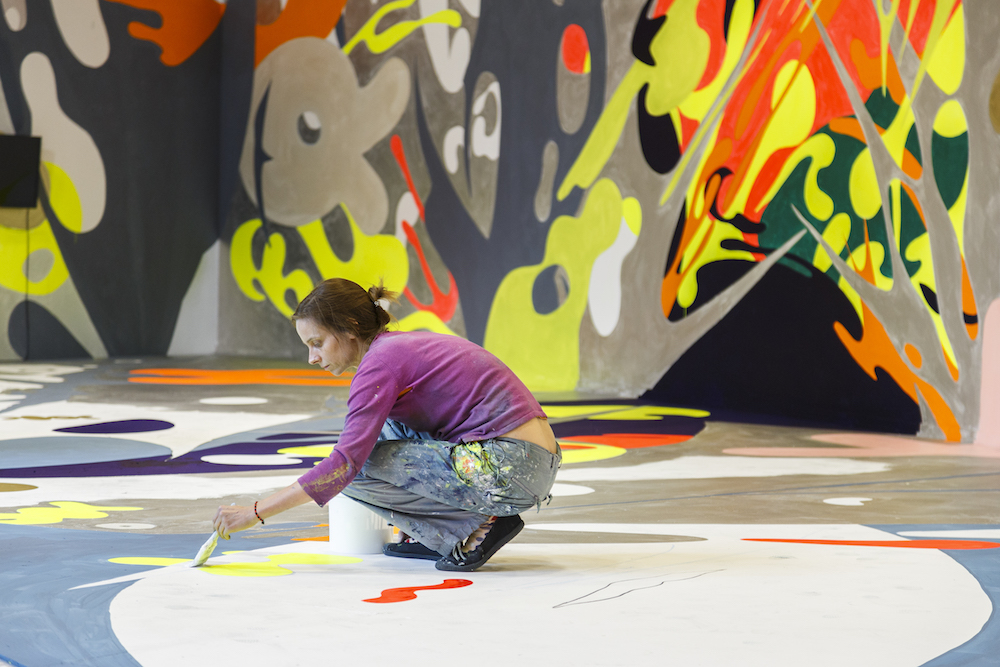Maus Contemporary
CLAUDIA CHASELING
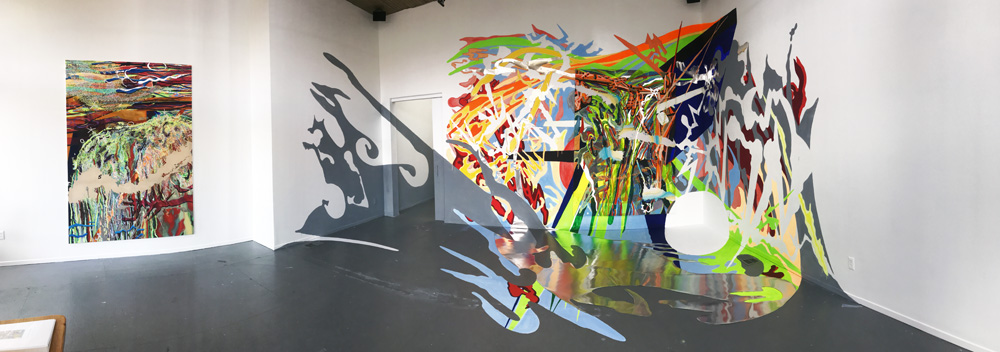 Claudia Chaseling "silent shadows" at Maus Contemporary, installation view
Claudia Chaseling "silent shadows" at Maus Contemporary, installation view
Claudia Chaseling "silent shadows" at Maus Contemporary, installation view
click above image to learn more about Claudia Chaseling's work and practice
“Over the years I have invented a seemingly abstract style or system of painting. I call this work Spatial Painting—spatial in terms of actually reaching beyond the canvas, and also incorporating a political element that references specific sociopolitical issues. Spatial describes the physical aspect of the painting, expanding into the third dimension, reaching over walls, floors, ceilings, objects and even paintings on canvas that I place inside the painted space. I use space and perspective as a tool to change the atmosphere of a place. I like to reach a point where the space seems distorted, tipping out of balance, estranged or “infiltrated”. One characteristic of painting and drawing is its directness. There is no other medium that can so clearly imprint and connect the thought, action and movement of the artist. However, painting is also a slow medium. It takes a long time to make, clarify and think, which means it’s not necessarily a medium that is in line with today’s fast-paced reality. But it is a healthy medium. When humanity eventually blows its fuse because of the speed at which we move today, painting will be popular—for sanity’s sake.
My current work was initiated in 2005 after seeing a documentary by Frieder Wagner addressing the use of depleted uranium weapons. I then looked into the related research of Prof. Dr Siegwart Horst Günther. A number of my works, from the Spatial Paintings to the graphic novels, deal with the factual realities and consequences of how in every conflict zone in which NATO or the US are involved, weapons are used that contain and distribute long-term radioactivity in the form of uranium and plutonium dust. This has been the case since the first Gulf War in the early 1990s. So one link I use in my work leads to this important documentary that not enough people have seen. Media conflict and propaganda are another subject in my work. Always when I dig up crucial information I embed it into my work and make a painting out of it. Another link I used leads to an article about the upgrading of US atomic weapons in Germany. Sometimes I’ll also integrate the link to my graphic novel Murphy the Mutant within a work. Recently I started an archive of this information; images and drawings in relation to links and text fragments”.
Claudia Chaseling’s work comprises wall size paintings and space filling murals. The artist creates swirls of organic from, upside down landscapes with reversed perspective and bright fluorescent wave structures with political content. The imagery of her Spatial Paintings consists of distorted landscapes, estranged places, mutated creatures and plants whose deformation is caused by radioactive poisoning. Images of places and landscapes, once so familiar, are now estranged.
Chaseling’s expansive wall/floor paintings interrupt the geometric order and balance of the exhibition space, through their optically vast depth and sway between the 2 and 3 dimensional. The perceptual interference of the paintings is subtle and at first only perceived intuitively, forcing the viewer to question, what causes this effect. Using a specifically developed technique of tempera, color pigments and aluminum shapes the artist addresses the antagonistic relationship between structure and chaos. From a state of disorder, Chaseling creates new compositions. The result is an amorphous system of complex fragments, painted structures that are reminiscent of light reflections, waves rolling on the water surface and objects in form of capsule-like creatures. The artist creates an atmosphere of alienation that pulls the observer into a new ambiguous perspective, searching for the undiscovered Zeitgeist through painting.
Claudia Chaseling lives in Berlin and Canberra and received a Masters from Udk, Berlin and a Ph. D. from ANU, Canberra. Claudia is known for “Spatial Painting”, site-mutative biomorphic murals that optically distort the familiar geometry of the space, whilst carrying socio-political content. In 2013 she published the graphic novel Murphy the mutant that became an anchor for her work to follow. Her work has been featured at over sixty exhibitions internationally, including X-Border Biennial, Finland, LAB11 Biennial, Sweden, and the Lorne Biennial, Australia. Recent solo exhibitions were held at Art Gallery Nadezda Petrovic, Serbia; Wollongong Art Gallery, and Yuill Crowley Gallery, Australia; Kunstverein Duisburg and Staatliche Kunsthalle Baden-Baden, Germany; and AiB, NYC. “Vfzkt Berlin” published her monograph in 2016. Grants include DAAD, Karl-Hofer Award, Samstag Scholarship, OZCO and artsACT. Residencies include Art Omi and ISCP, NYC.
___________
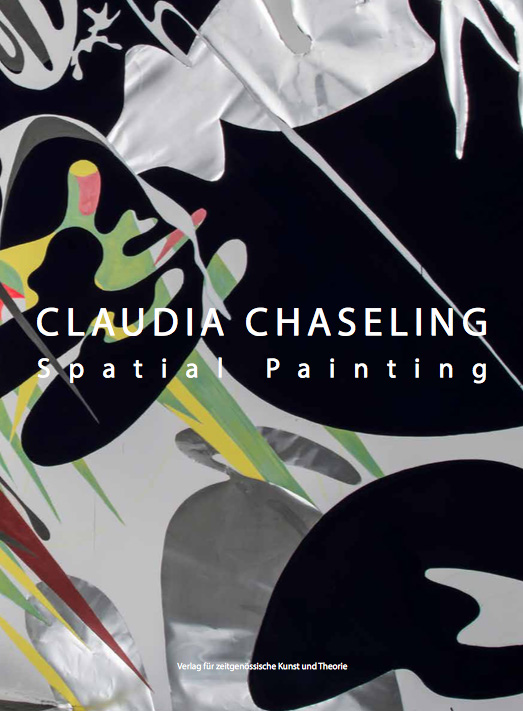 CLAUDIA CHASELING - SPATIAL PAINTING
-
click book cover to access a PDF of the book
CLAUDIA CHASELING - SPATIAL PAINTING
-
click book cover to access a PDF of the book
Claudia Chaseling Spatial Painting
Hardcover, 240 pages, full color
approx. 12 by 9.6 in. (ca.30,7 by 23,7 cm)
English and German
editor: Benedikt Stegmayer
authors: Bojana Pejic, Benedikt Stegmayer, Johannes Honeck, Barbara Steiner, eX de Medici, and Claudia Chaseling
Verlag für zeitgenössische Kunst und Theorie, Berlin, 2016
ISBN: 978-3-944295-17-6
___________
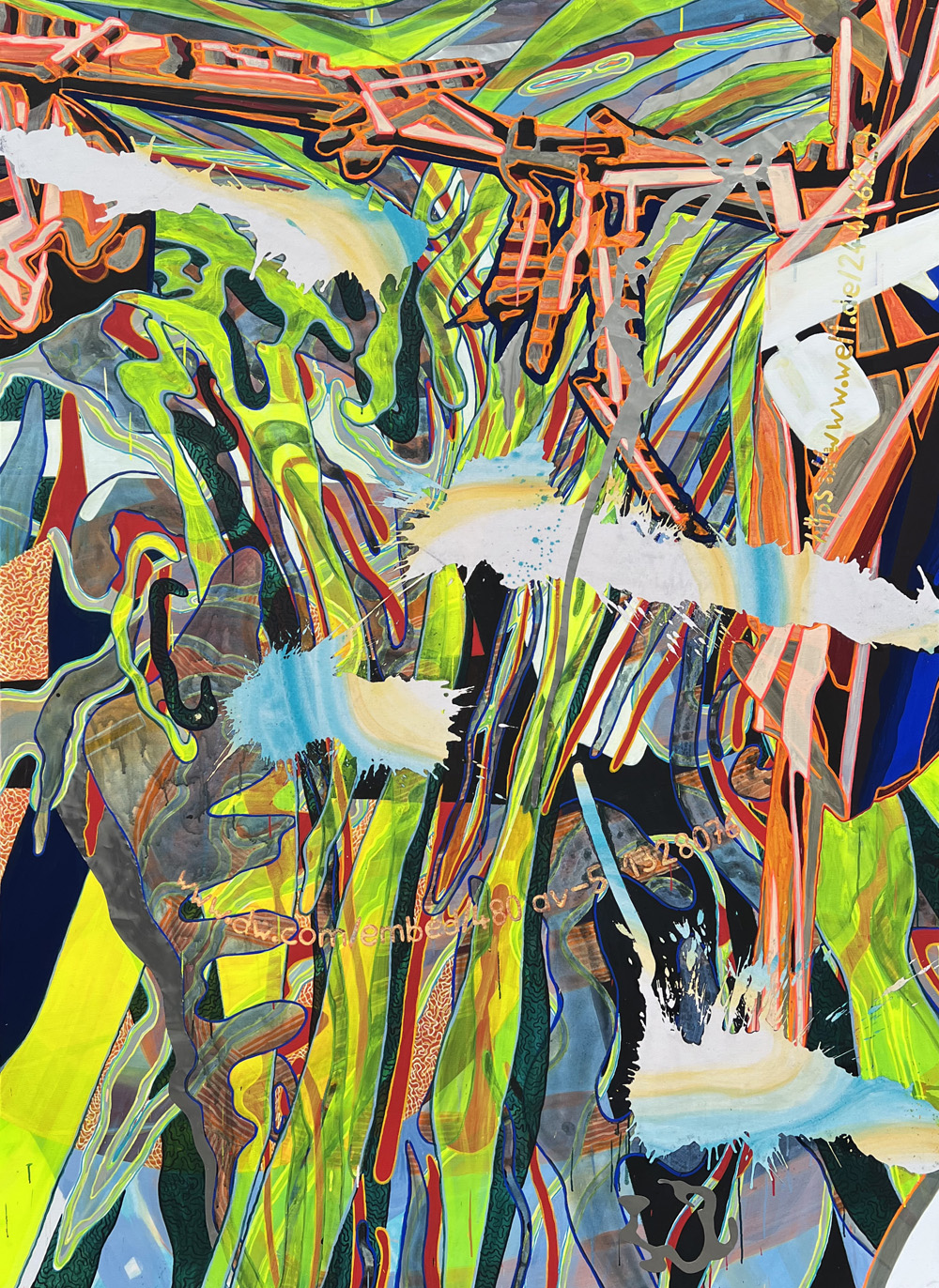 Claudia Chaseling "silent shadows"
Claudia Chaseling "silent shadows"
Claudia Chaseling
silent shadows
2023
pigments, aluminum, and MDM binder on canvas
250 by 180 cm (approx. 98.4 by 70.9 in.)
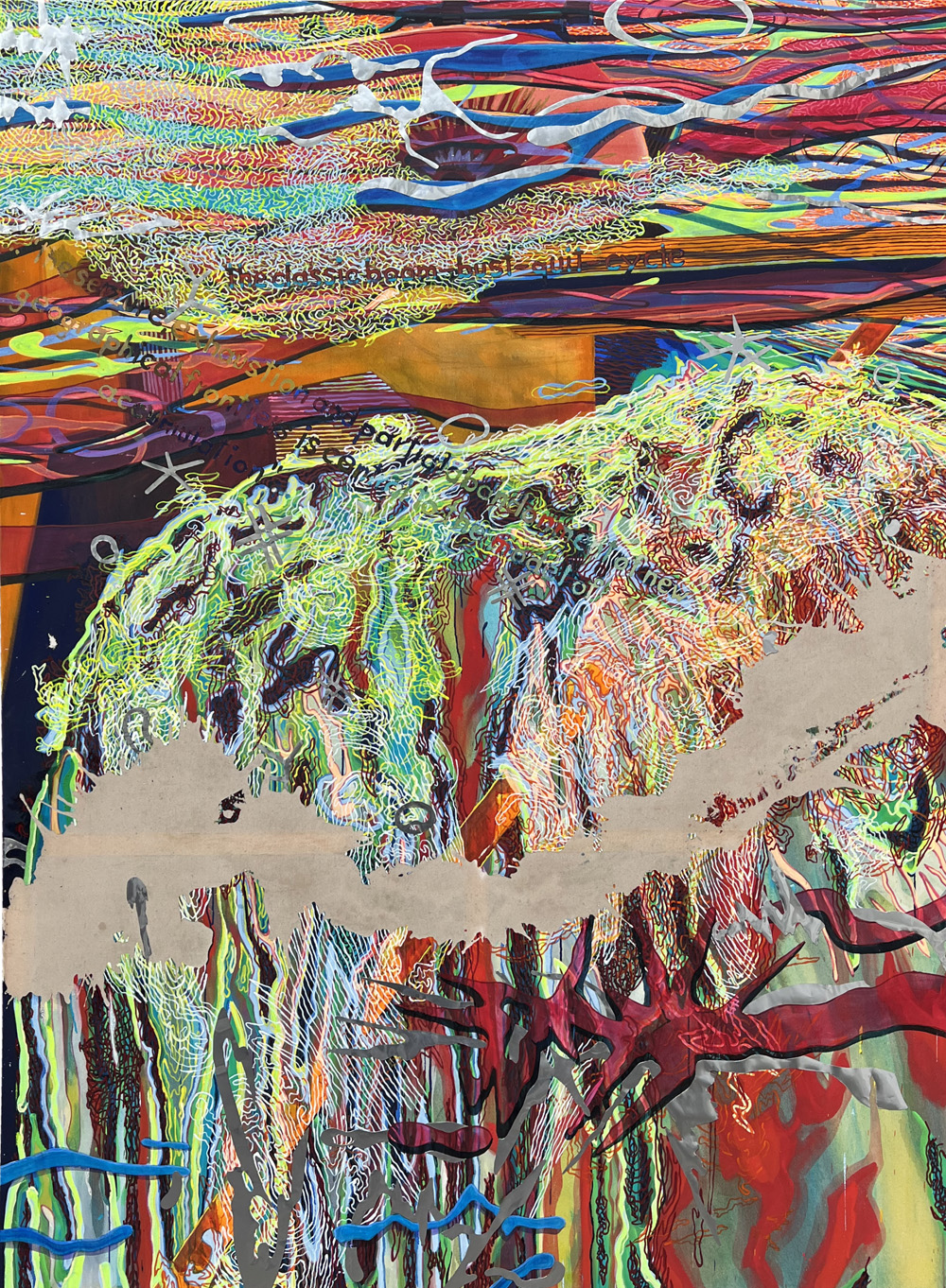 Claudia Chaseling "deluge of delusion 6"
Claudia Chaseling "deluge of delusion 6"
Claudia Chaseling
deluge of delusions
2023
oil, pigments, aluminum, and MDM binder on canvas
250 by 180 cm (approx. 98.4 by 70.9 in.)
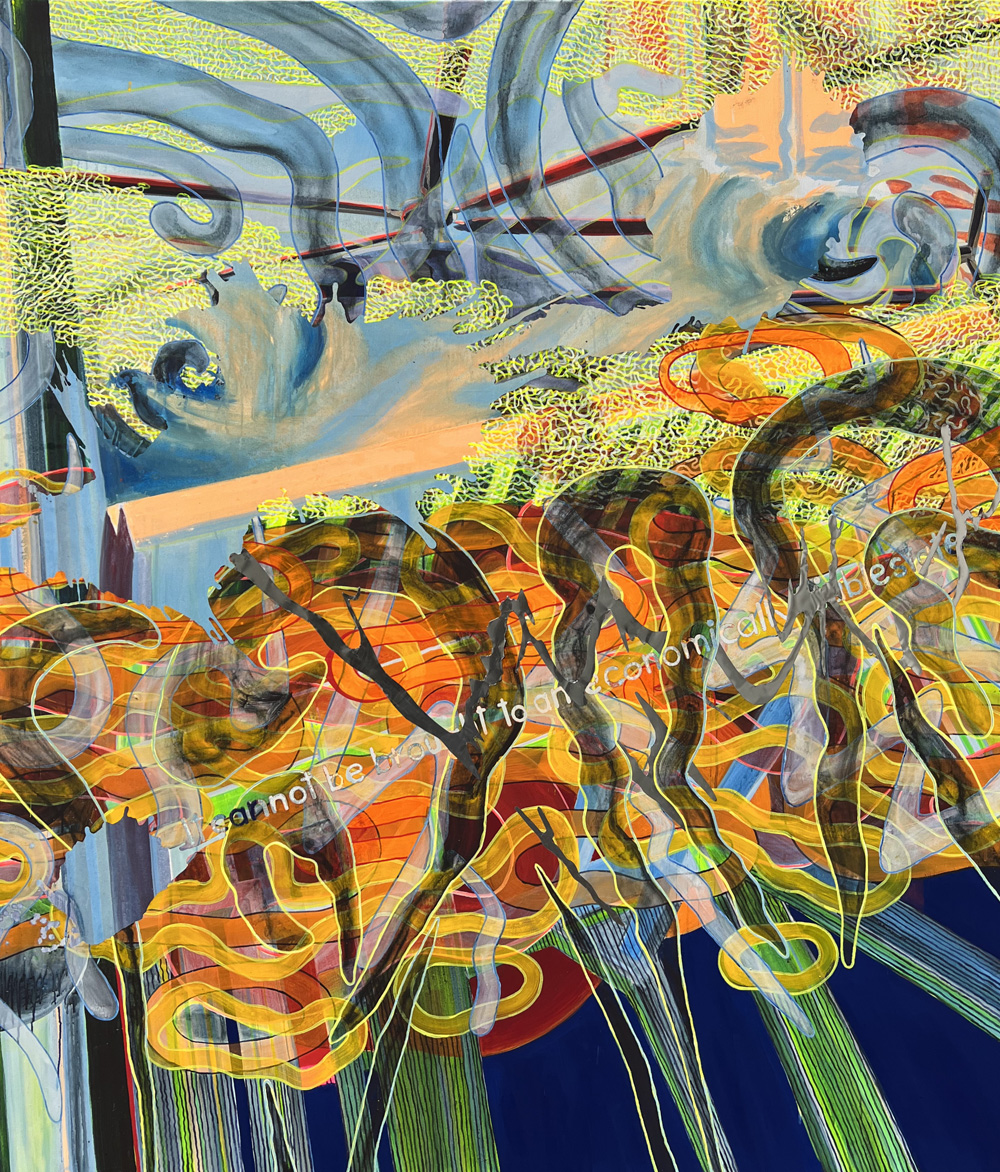 Claudia Chaseling "souls"
Claudia Chaseling "souls"
Claudia Chaseling
souls
2023
pigments, aluminum, and MDM binder on canvas
200 by 170 cm (approx. 78.75 by 66.9 in.)
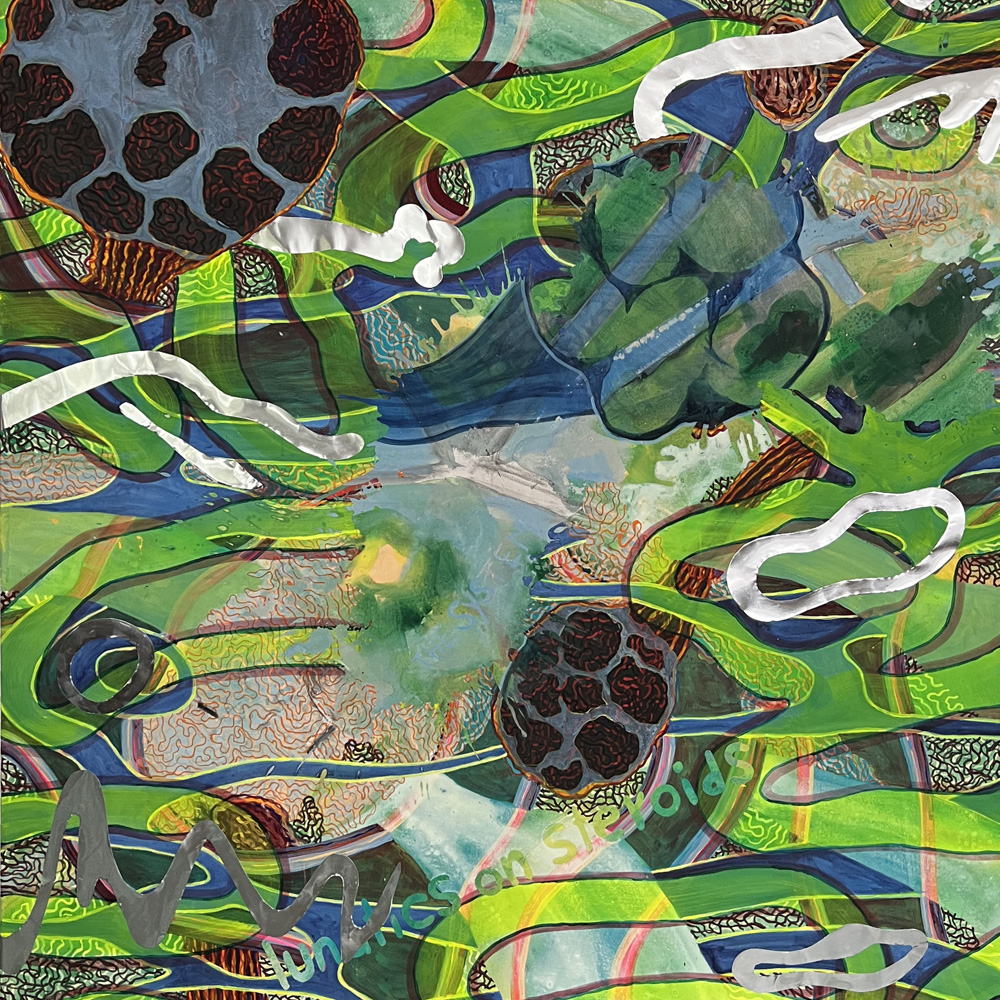 Claudia Chaseling "the system 1"
Claudia Chaseling "the system 1"
Claudia Chaseling
21st century (the system)
2023
oil, pigments, aluminum, and MDM binder on canvas
120 by 120 cm (approx. 47.25 by 47.25 in.)
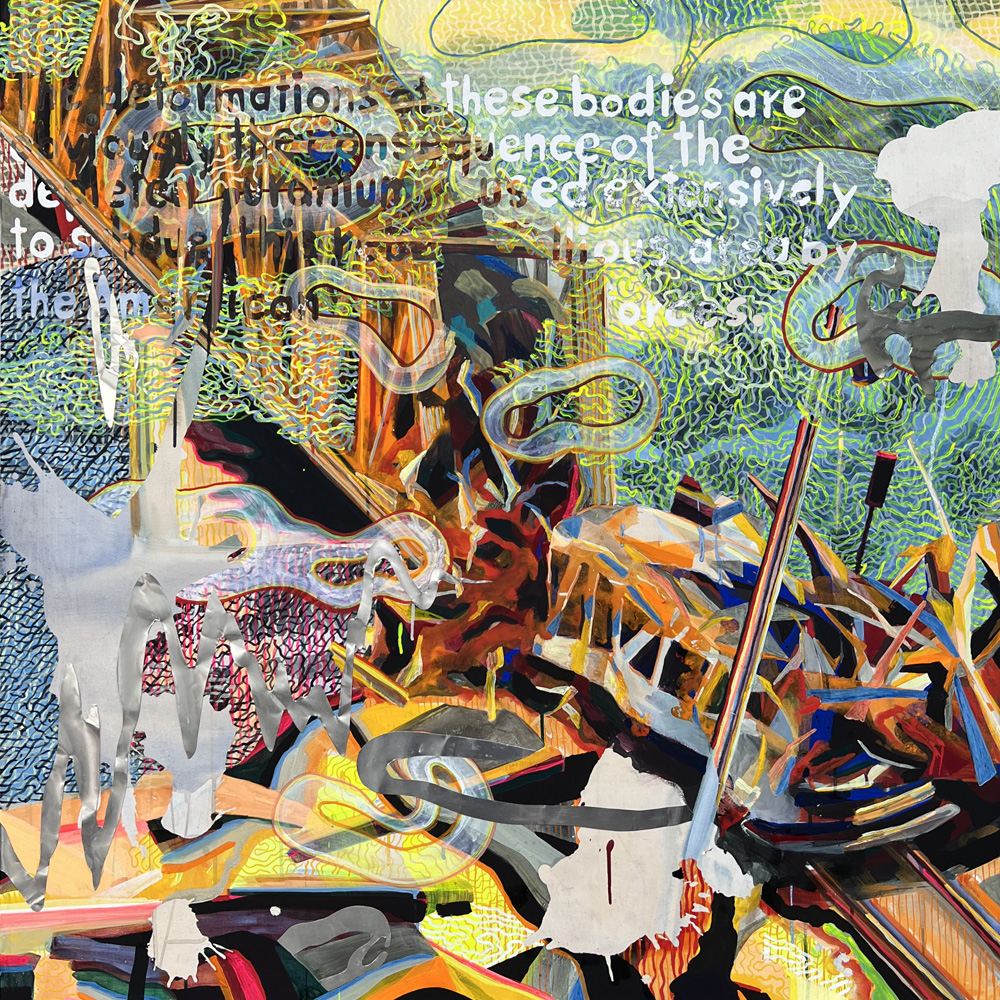 Claudia Chaseling "the system 2"
Claudia Chaseling "the system 2"
Claudia Chaseling
angels (the system)
2023
pigments, aluminum, and MDM binder on canvas
120 by 120 cm (approx. 47.25 by 47.25 in.)
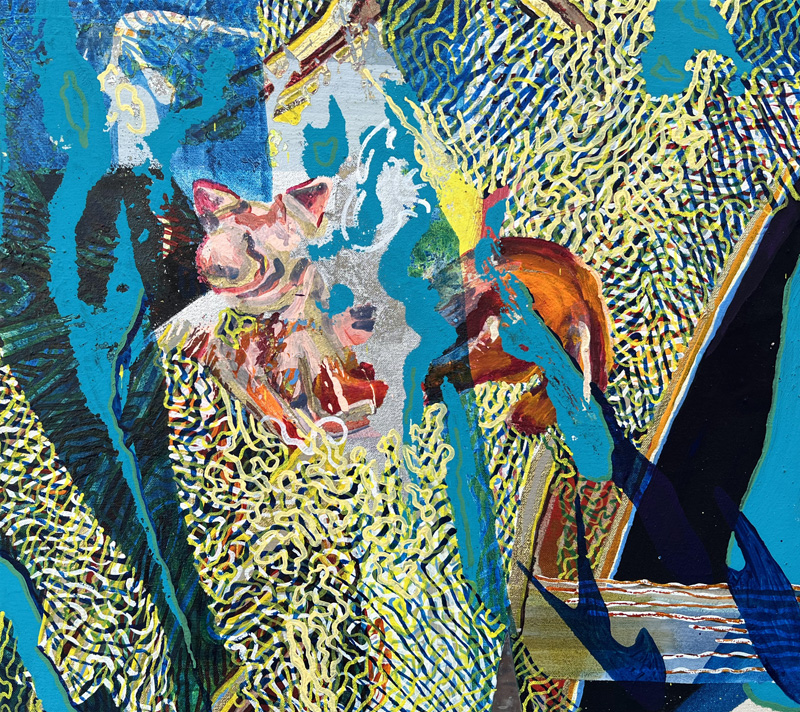 Claudia Chaseling "cat"
Claudia Chaseling "cat"
Claudia Chaseling
cat
2023
egg tempera, pigments, aluminum, and MDM binder on canvas
45,7 by 50,8 cm (approx. 18 by 20 in.)
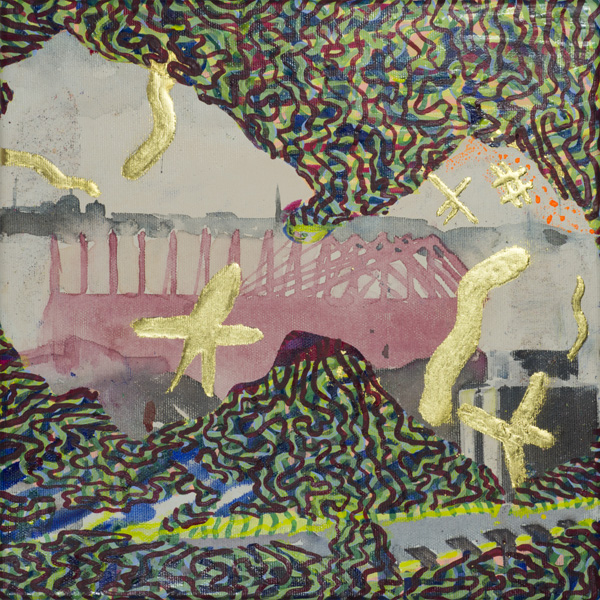 Claudia Chaseling "looking through 1" Claudia Chaseling "looking through 1" |
 Claudia Chaseling "reverse universe" Claudia Chaseling "reverse universe" |
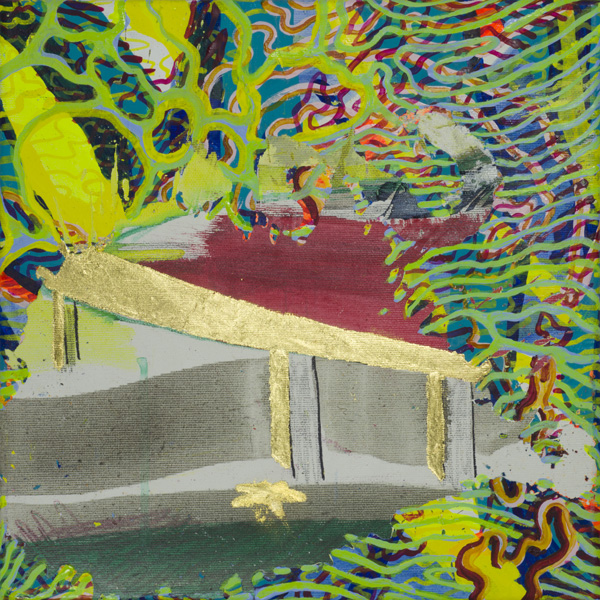 Claudia Chaseling "looking through 2" Claudia Chaseling "looking through 2" |
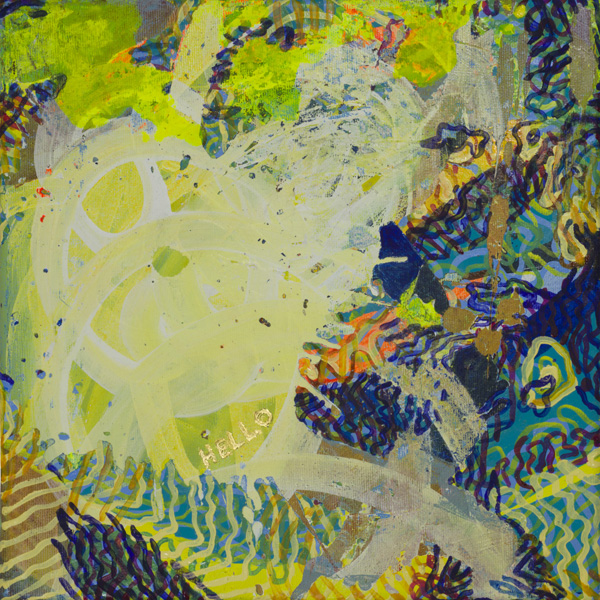 Claudia Chaseling "just a few steps away" Claudia Chaseling "just a few steps away" |
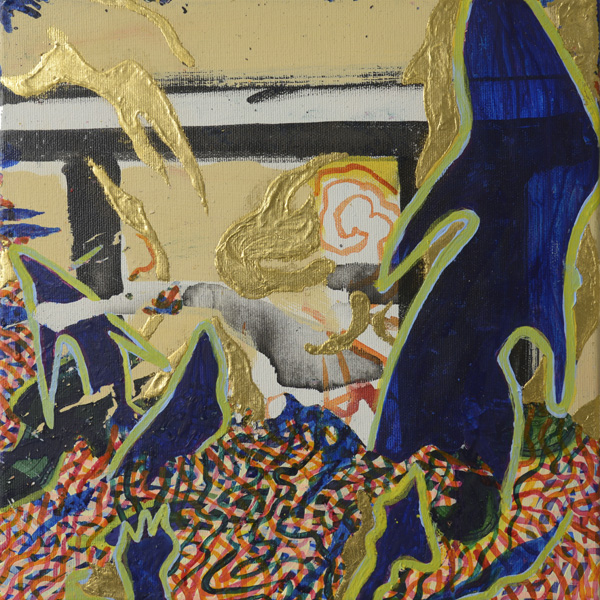 Claudia Chaseling "escape 1" Claudia Chaseling "escape 1" |
 Claudia Chaseling "escape 2" Claudia Chaseling "escape 2" |
Claudia Chaseling
| looking through 1 | reverse universe |
looking through 2 |
| just a few steps away |
escape 1 | escape 2 |
2023
oil, egg tempera, pigments, gold leaf, and MDM binder on canvas
each 30 by 30 cm (approx. 11.8 by 11.8 in.)
moments of failure
Das Grundmotiv dieses Triptychons ist einer der vielen brechenden Staudämme der jüngsten Zeit. Drei Motive wurden von 3 Sekundenaufnahmen des Brechens genommen und als Grundprinzip der Malerei verwendet.
Eingebettet in die abstrahierte Dynamik der kurzen Augenblicke des Wasserdurchbruchs, sind Informationen über aktuelle Umweltpolitische Konflikte. Im Bild wird Naturgewalt mit menschlichen Entscheidungen parallel gestellt, wobei in Realität gravierende Veränderungen in der Natur oft die Konsequenz von menschlichen Entscheidungen und dazugehörendem Handeln sind. Die Entwicklungen in der Umwelt wiederum beeinflussen menschliches Denken und Handeln erneut. Hauptquelle für Texte, Zitate und URL Codes in diesem Triptychon ist der Environmental Justice Atlas, eine neutrale Datenbank, die Fakten sammelt und Vorkommnisse weltweit über Jahre hinweg begleitet (ejatlas.org).
Ursprung der amorphen und biomorphen Abstraktion der Malereien sind langjährige Naturbeobachtungen. Wobei in dem Zeitraum 2000-2010 der Fokus auf Strukturen in der Natur lag, die sich über Jahrtausende entwickeln sowie Linien in Gestein, aber auch Wasserbewegungen und Fraktale; liegt der Fokus seit 2010 auf mutierter Natur, deren Veränderungen durch chemische Einflüsse wie Pestizide und Radioaktivität verursacht werden. Ausgangspunkt der Malereien sind stets Beobachtungen der Umwelt und deren Veränderung. Kombiniert wird diese malerische Formsprache mit Texten, comicartigen Gestalten und oft Elemente aus Architektur und Technik.
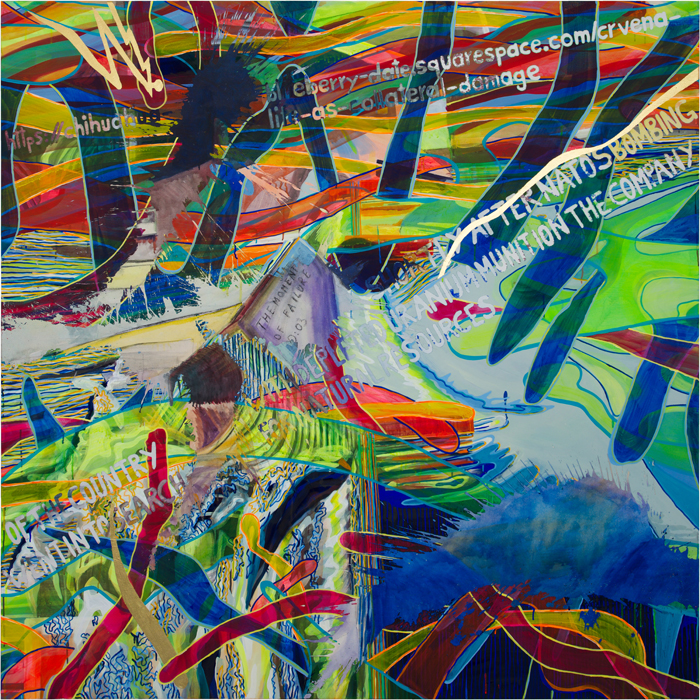 Claudia Chaseling "moment of failure 00:03"
Claudia Chaseling "moment of failure 00:03"
Claudia Chaseling
moment of failure 00:03
2022
oil, pigment, MDM binder, and gold leaf on canvas
170 by 170 cm (approx. 66.9 by 66.9 in.)
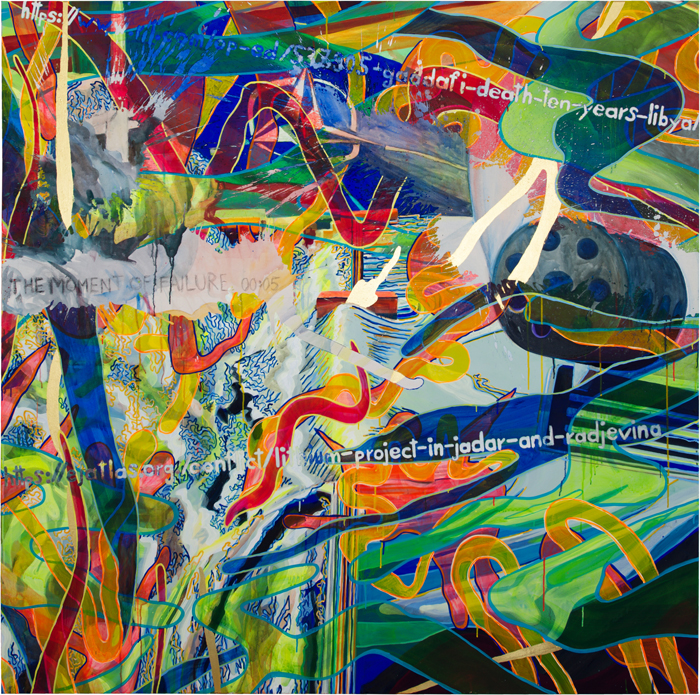 Claudia Chaseling "moment of failure 00:05"
Claudia Chaseling "moment of failure 00:05"
Claudia Chaseling
moment of failure 00:05
2022
oil, pigment, MDM binder, and gold leaf on canvas
170 by 170 cm (approx. 66.9 by 66.9 in.)
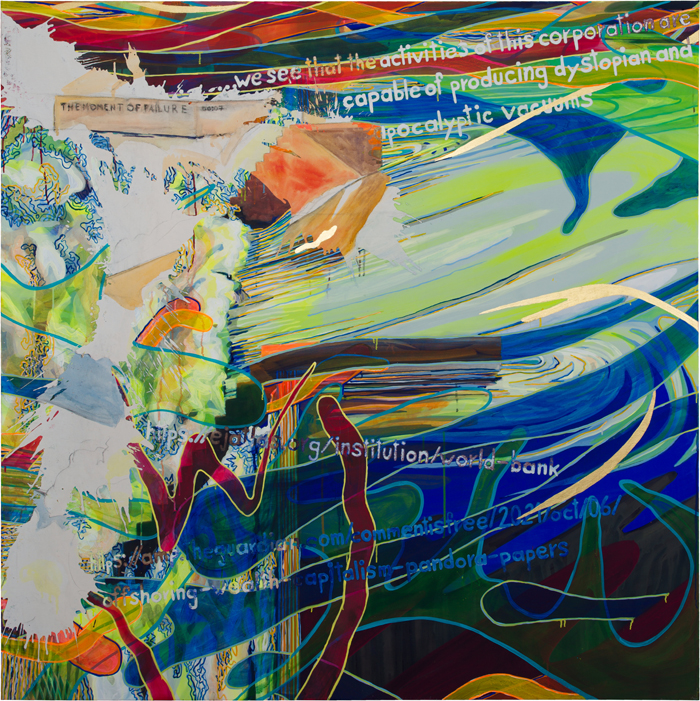 Claudia Chaseling "moment of failure 00:07"
Claudia Chaseling "moment of failure 00:07"
Claudia Chaseling
moment of failure 00:07
2022
oil, pigment, MDM binder, and gold leaf on canvas
170 by 170 cm (approx. 66.9 by 66.9 in.)
Die 1973 in München geborene Künstlerin Claudia Chaseling wohnt und arbeitet in Berlin, verbringt aber seit etwa 20 Jahren auch viel Zeit in Australien. Ihre Stationen führten über die Kunstakademien in München und Wien sowie die Universität der Künste in Berlin. Dort absolvierte sie im Jahr 2000 bei Prof. Marwan den Meisterschülerabschluss. Die Australian National University in Canberra hat ihr 2019 den Doktortitel der Philosophie in bildender Kunst verliehen, die australische Botschaft widmete ihr im vergangenen Jahr eine vielbeachtete Einzelausstellung.
Chaseling ist bekannt für Spatial Paintings – abstrakte Wandgemälde, die an Wänden, Böden und Decken befestigt sind und den Raum optisch verzerren. Sie veröffentlichte außerdem zwei Graphic Novels, deren Titel bereits auf das Hauptthema ihrer Arbeiten hinweisen: „the black whole“ und „Murphy the mutant“. Mit Mutationen hat sich die Künstlerin schon beschäftigt, als sich dieser Begriff noch nicht auf die neueste Covid-19-Variante bezog. Sie spürt der radioaktiven Kontamination nach, die der Mensch der Welt hinterlässt. Den Pflanzen, den Tieren, der Landschaft – und seiner eigenen Spezies. Ein Dokumentarfilm über den Einsatz von Waffen mit angereichertem Uran inspirierte Chaseling einst dazu, sich künstlerisch mit atomar verformten Kreaturen und ihrer Umwelt auseinanderzusetzen.
Mit Pigmenten malt sie Bewegungen organischer Formen, optisch umgekehrte Perspektiven und grell fluoreszierende Wellenstrukturen. Die Motive der raumorientierten Malerei bestehen aus verzerrten Landschaften, entfremdeten Orten, mutierten Pflanzen und Lebewesen, deren Deformationen von toxischer und radioaktiver Kontaminierung herrühren. Gemalte Textelemente, Internetlinks und Symbole im Bild eröffnen die Themen auf einer weiteren Ebene. Es wird ein Wirbel aus Utopien und Visionen konzipiert und eine ungewöhnliche, verzerrte Perspektive erzeugt.
